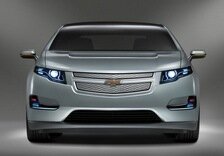Recent articles
-
Friday, June 3, 2011 - 5:23pm
-
Sunday, May 29, 2011 - 2:54pm
-
Friday, May 27, 2011 - 5:21pm
-
Thursday, May 26, 2011 - 9:07am
-
Monday, May 23, 2011 - 9:10am
-
Sunday, May 22, 2011 - 4:54pm
-
Friday, May 20, 2011 - 4:07pm
Recent comments
-
90 mph solar car makes Chevy Volt look tameIt sound a bit unrealistic ...Saturday, June 4, 2011 - 9:46am
-
Sprint putting money where its mouth is with phone buyback improvementsIt's a good initiative but at ...Saturday, June 4, 2011 - 3:30am
-
Solar cell in Apple iPhone 5, & next iPad may give Apple a leg upIf Apple decides to use the ...Saturday, June 4, 2011 - 3:22am
-
Mini’s electric scooter combines smartphone tech & sex appealElectric scooter are becoming ...Friday, June 3, 2011 - 3:11am
-
Barnes & Noble’s Nook hits Best Buy, new versions coming soonhopefully soon they will have ...Thursday, June 2, 2011 - 1:02pm
-
BMW chasing electric car mark with the BMW i, but it may be too slowBMW has given some good ...Thursday, June 2, 2011 - 2:54am
About Tainted Green
Why Tainted Green? Literally, green is only a color. But in typical human fashion we've pumped a cacophony of additional meanings and symbolism into the word. Green has become a marketing tool used by companies with impunity to wrap their products in a balmy haze of "ethical" and "conscientious" approval.
That's where Tainted Green steps in. We are seekers of truth, and we support the fundamental drivers behind the green movement. Ideas like permaculture, renewable energy, and recycling make sense, but companies that express support for green without a wholesome process behind it have tainted the meaning of green. And so, our focus is to create green content that pushes the ideology forward while pointing out which parts look like this year's marketing baggage. Welcome to Tainted Green, where we focus on unearthing the truth about green.


 You may have noticed in recent months that the coal industry has purchased a lot of ad time on cable networks. Many of them are running spots that tout coal as a clean and safe energy source that creates jobs. A group called “Coal Kills Kids” (CKK) is calling shenanigans on the dirty industry with their satiric site called “Coal Cares” that targets the world’s biggest coal company.
You may have noticed in recent months that the coal industry has purchased a lot of ad time on cable networks. Many of them are running spots that tout coal as a clean and safe energy source that creates jobs. A group called “Coal Kills Kids” (CKK) is calling shenanigans on the dirty industry with their satiric site called “Coal Cares” that targets the world’s biggest coal company. SHIFT Boston, an environmental municipal incentive, and Influx Studio from Paris are cooperating on a project named Treepods – artificial trees which would remove CO2 from air in their vicinity by using solar power, recycled plastic and kinetic energy from built-in playing devices. Their initiative is to install Tripods throughout Boston, creating an urban canopy.
SHIFT Boston, an environmental municipal incentive, and Influx Studio from Paris are cooperating on a project named Treepods – artificial trees which would remove CO2 from air in their vicinity by using solar power, recycled plastic and kinetic energy from built-in playing devices. Their initiative is to install Tripods throughout Boston, creating an urban canopy. Like the rest of the economy, the real estate market hasn’t been healthy for a number of years. Builders have had to lay off workers, brokers aren’t cashing a lot of commission checks, and a lot of new homes remain empty for months. Many are looking to green ideas to set their properties apart from vanilla-type construction and a high number of foreclosures hitting the market. Construction giant KB Home is taking this idea to heart and has plans to build a number of communities where solar panels are installed on every starter home.
Like the rest of the economy, the real estate market hasn’t been healthy for a number of years. Builders have had to lay off workers, brokers aren’t cashing a lot of commission checks, and a lot of new homes remain empty for months. Many are looking to green ideas to set their properties apart from vanilla-type construction and a high number of foreclosures hitting the market. Construction giant KB Home is taking this idea to heart and has plans to build a number of communities where solar panels are installed on every starter home. Environmental degradation, such desertification, often occurs due to human activities that convert land to agricultural or industrial uses. But what if engineering know-how is used to turn deserts into oases instead? That is precisely what the Kingdom of Jordan hopes to do in partnership with the Sahara Forest Project. By combining solar energy and seawater greenhouse technologies, Jordan hopes to make the desert bloom.
Environmental degradation, such desertification, often occurs due to human activities that convert land to agricultural or industrial uses. But what if engineering know-how is used to turn deserts into oases instead? That is precisely what the Kingdom of Jordan hopes to do in partnership with the Sahara Forest Project. By combining solar energy and seawater greenhouse technologies, Jordan hopes to make the desert bloom. Solar energy has the potential provide all our power needs. But costs and technological challenges limits the economical utility of solar power. Perhaps the solution is to emulate those ubiquitous but often unnoticed solar energy collectors: plants. A team of researchers recently unveiled a device that, like plants, uses sunlight and a unique catalyst to convert carbon dioxide or water into fuel.
Solar energy has the potential provide all our power needs. But costs and technological challenges limits the economical utility of solar power. Perhaps the solution is to emulate those ubiquitous but often unnoticed solar energy collectors: plants. A team of researchers recently unveiled a device that, like plants, uses sunlight and a unique catalyst to convert carbon dioxide or water into fuel. In the crowded e-reader market companies are doing anything they can to set themselves apart from the pack. The iPad has a colorful screen, the Nook has a sharing option with e-books, and the Kindle has an enormous amount of content available from Amazon. Toshiba hopes that solar power and a cheap price will juice up sales for their new e-reader, the
In the crowded e-reader market companies are doing anything they can to set themselves apart from the pack. The iPad has a colorful screen, the Nook has a sharing option with e-books, and the Kindle has an enormous amount of content available from Amazon. Toshiba hopes that solar power and a cheap price will juice up sales for their new e-reader, the  The 2011 Chevrolet Volt provides a lot of benefits for drivers who can afford the upfront costs. Benefits like driving 40 miles without using any gas, and long term economic savings. But one challenge each potential customer has to work through before taking the plunge is how to charge it. The biggest economic advantages from the Chevrolet Volt come from its electric-only mode and that means its lithium-ion batteries need regular access to electricity. That in mind, Envision Solar has a solution in the form of single vehicle Solar Socket.
The 2011 Chevrolet Volt provides a lot of benefits for drivers who can afford the upfront costs. Benefits like driving 40 miles without using any gas, and long term economic savings. But one challenge each potential customer has to work through before taking the plunge is how to charge it. The biggest economic advantages from the Chevrolet Volt come from its electric-only mode and that means its lithium-ion batteries need regular access to electricity. That in mind, Envision Solar has a solution in the form of single vehicle Solar Socket. Researchers from the University of Sydney in Australia have discovered a highly efficient form of chlorophyll that could give solar panels the ability to convert more sunlight into energy. Chlorophyll is what allows plants and other photosynthetic organisms to convert the sun's rays into energy. More than half of the light produced by the sun comes in the infrared range of the light spectrum, and the recently discovered molecule, called chlorophyll f, absorbs light in the infrared part of the spectrum. Previously known types of chlorophyll only absorb light in the visible range from blue to red.
Researchers from the University of Sydney in Australia have discovered a highly efficient form of chlorophyll that could give solar panels the ability to convert more sunlight into energy. Chlorophyll is what allows plants and other photosynthetic organisms to convert the sun's rays into energy. More than half of the light produced by the sun comes in the infrared range of the light spectrum, and the recently discovered molecule, called chlorophyll f, absorbs light in the infrared part of the spectrum. Previously known types of chlorophyll only absorb light in the visible range from blue to red. While many companies are focused on changes to existing processes that create efficiencies translating into energy or resource savings – others are rethinking their initial approach. Consider a house, which traditionally requires logs or precut rectangular boards to build out the frame. Now replace that lumber with hardened bamboo, layer the top of it with solar panels, and you get something that looks like a modern way of living sustainably.
While many companies are focused on changes to existing processes that create efficiencies translating into energy or resource savings – others are rethinking their initial approach. Consider a house, which traditionally requires logs or precut rectangular boards to build out the frame. Now replace that lumber with hardened bamboo, layer the top of it with solar panels, and you get something that looks like a modern way of living sustainably. There’s no question that the entertainment industry generates a lot of waste from printing scripts or even shooting on location. After Conan O’Brien walked away from the Tonight Show, NBC
There’s no question that the entertainment industry generates a lot of waste from printing scripts or even shooting on location. After Conan O’Brien walked away from the Tonight Show, NBC